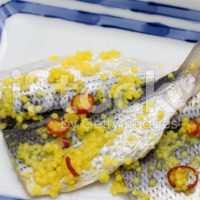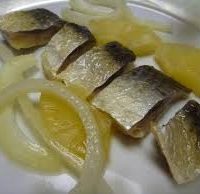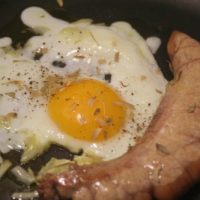But they totally make bubbles! What percent of the bubbles are hydrogen? Also if you add salt, doesn’t the whole thing turn toxic?
Nanobubbles – http://www1.lsbu.ac.uk/water/nanobubble.html are not like micro bubbles, macro bubbles and regular bubbles in general. Nano’s are a very different kind of bubble.
When water is broken down into gas molecularly by electrolysis the total gas volume generated is 33.3 % oxygen (non-explosive gas) and 66.6% hydrogen (explosive gas). The oxygen concentration is 100% and the hydrogen concentration is 100%.
A Google search reveals this: You decide between the science and the oxygenator advertisement and infomercials.
GENERATOR – ELECTROLYSIS TYPE
OXYGENATOR™ – OXYGEN GENERATOR – ELECTROLYSIS TYPE
Aqua Innovations Oxygenator™, O2 Marine Technologies, distributed by T-H Marine is an electrolysis device primarily sold and used in freshwater livewells and bait tanks. This small D/C battery operated electrical oxygen system requires (2) AA or 12 volt batteries, some units require daily maintenance after each use, new units are advertised maintenance free.
SCIENTIFIC FACTS: “The Oxygenator-How well does it work?” “How Effective is It?” Tested by Texas Parks and Wildlife Inland Fisheries Department.
TPWD, Inland Fisheries Division, San Antonio, TX Publication by Fishery Biologist Randy Myers AquaInnovations Oxygenator 2-14-2012 http://www.slideshare.net/raminlandfish/the-oxygenator-how-effective-is-it
When fish and live bait are densely crowded into livewells and bait tanks and excited during capture, handling, transport and captivity; it is absolutely is essential to provide dissolved oxygen (DO) faster than it is consumed by all the fish/bait in the livewell. This is not the normal steady state environment for a wild fish. The traumatic capture (netting, hooking struggling to extreme exhaustion), livewell confinement and hours of transport in livewells with poor water quality conditions. This is an absolute ongoing crisis, continuous fear and high adrenaline production for the captive fish… the worst day in a fish’s life. Then comes the cortisol downer.
*The TP&WD dissolved oxygen test were done with NO fish in the livewell water consuming oxygen. Add 1 fish and the dissolved oxygen level in the livewell water plummets drastically. Add 15-20 lbs. of fish and the oxygenator simply fails to supply a safe amount of pure oxygen to maintain minimal safe live transport DO saturation resulting in high mortality and morbidity – THE DEAD FISH PENALITY.
FACT: Although the Oxygenator does deliver 100% pure oxygen as advertised, it simply does not deliver enough pure oxygen continuously when fish are added to the livewell.
CAUTION: The gas space between a closed livewell lid and the water surface can become enriched with 3 different gases; oxygen, hydrogen, (an explosive gas like acetylene and propane) and pure 100% chlorine gas (an explosive gas) if the electrolyzed livewell water contains any salt or livewell products that contain salt. Incorporate any potential ignition source (electric wires, any live electricity) inside the livewell… EXPLOSION HAZARD / FIRE HAZARD.
Electrolysis breaks down fresh water molecules into pure hydrogen gas (H), pure oxygen gas (O2) plus deadly hydroxyl ions. If the livewell water contains any salt or livewell chemicals that contain salt, chlorine gas is always produced. Chlorine gas bubbles are visualized around the emitter as small greenish-yellow color gas bubbles (seen with back lighting). Hydrogen and oxygen bubbles are colorless.
In freshwater livewells, two thirds (2/3) of the gas bubbles produced at the emitter is pure hydrogen gas (an explosive gas) and only 1/3 of the bubbles you see are pure oxygen. Although the generator may not produce enough oxygen for all the fish or bait in the livewell, the total stocking density; it is designed, advertised and does produce [some] pure 100% oxygen by electrolysis of water. That is the sales point.
Oxygenator™ has no moving parts, makes no noise while older emitters require maintenance with special equipment after each use. Everything dies in the livewell if the oxygen live support system fails to produce or deliver enough oxygen.
Summer conditions and overstocked livewells may exceed the Oxygenator™ capabilities to provide minimum safe DO saturation levels while the unit is working perfectly as advertised.
Water electrolysis produces some pure oxygen and twice as much pure hydrogen; 1:2 ratio respectively. The small volume of pure oxygen it does generate is neither regulated nor controlled by the fisherman. The small volume of oxygen generated is strictly limited, regulated and controlled by a thermometer that measures livewell water temperature.
The actual DO saturation produced with the Oxygenator™ has nothing to do with the DO saturation required to meet and sustain the minimal safe livewell oxygenation for 8-10 hours of intensive transport in overstocked summer livewell conditions.
Reduce disappointments and eliminate any unreal expectations, ask a boat dealer and Oxygenator™ salesman before the purchase – Will the Oxygenator™ provide and ensure minimal safe livewell oxygenation in the summer, keep my live bait and all my tournament fish alive all day?
Livewell oxygen systems must produce, maintain and sustain minimal continuous dissolved oxygen saturations (100% – 175% DO saturation) in a bass boat livewell, tournament weigh-in holding tank, release boat transport tanks containing a heavy limit, many limits of tournament bass (15-30 lbs fish or 400 lbs of live fish) in July/August tournaments all day long.
ELECTRICAL CURRENT may cause physiological and psychological stress impact of transporting live bait and tournament gamefish in water that’s actively being exposed to sustained low electrical current (electrolysis) in water unknown, out of sight and out of mind.
NEGATIVE AFFECTS OF ELECTROLYSIS are well know by fishermen…how electrolysis breaks down metal and electrical components on boats, motors and boat trailers. Why zinc anodes are absolutely necessary to counteract the negative effects of electrolysis.
The hallmark selling point is: “The Oxygenator ™ makes 100% pure oxygen,” Period. But, sellers will never mention if it makes enough oxygen to sustain an overcrowded livewell full of fish or live bait all day in the summer.
Technically the Oxygenator™ does qualify as a livewell oxygen system. The Oxygenator™ costs as much as a livewell water pump or small air compressor, bubble stone and air tube.
If the generator fails to produce and or sustain the minimal safe Dissolved Oxygen Saturation all day for all the catch, your gamefish and bait may die while the generator is making 100% oxygen, operating perfectly as advertised. Like when your mechanical aerator or livewell water pump is working perfectly, humming away while the tournament fish or bait are suffocating and dying as you watch in your summer livewell.
Know the facts and limitations about the Oxygenator™. Expect very limited pure oxygen production and low dissolved oxygen (DO) saturations in livewells full of gamefish and live bait every summer because the oxygen output is controlled and cycled on and off strictly by livewell water temperature. When the unit is new and functioning correctly in late fall, winter, early spring weather, the small volume of 100% oxygen may satisfy the biological oxygen demand for a small fish or a few live baits when environmental water temperature is within 40 F – 65 F.
Failure to generate enough DO is a seasonal problem like aeration, exhibited every summer when the surface water temperature reaches 75 F – 90 F. Like all mechanical aeration and water pumps, you cannot ensure minimal safe livewell DO saturation with air or the Oxygenator™ in heavily stocked livewells. Water pumps only pump water and air pumps only pump air… air and water is not oxygen regardless of how mush air and water you pump in the summer.
The water temperature sensor (the brain of the electrolyzer is a thermometer) cycles the unit on and off intermittently, the amount of oxygen that’s generated is strictly controlled by livewell water temperature not by the oxygen needs of livewells full of fish or live bait.
Add ice to cool the water and the unit cycles less generating less oxygen whether the well contains (1) three pounds of fish, (10} five pounds of fish or (15) fifteen pounds of live baitfish.
Unlike standard professional fish transporters dissolved oxygen standards for transport DO protocols, livewell stocking densities are not a consideration for oxygen production and is of no concern with the Oxygenator™. That major design feature, a real plus to save electricity and battery power, can be absolutely deadly in the summer.
You can not increase the volume of 100% oxygen the unit produces and delivers which exposes an extremely limiting water quality factor like you’ve experienced with mechanical aeration: insufficient safe oxygenation.
DISSOLVED OXYGEN SATURATION RATE: Oxygenator™ literature claims to generate 80% DO saturation in 20 minutes in freshwater livewells, [no fish or bait in livewell water consuming oxygen, livewell stocking density -0-.].
This sounds great, right?
How do you think 80% DO Saturation in 20 minutes with an Oxygenator™ squares with any standard aerator or livewell water pump?
FACT: With no fish or bait in the livewell [livewell stocking density -0-.] and the standard mechanical aerators livewell pump running perfectly, 80% DO saturations or greater are easily reached within several minutes in summer livewell water. Even Mr. and Ms. Bubbles’ air pumps and bubblers can and will achieve 80% DO saturation under the same conditions in a few minutes in livewell water devoid of live bait and fish.
Oxygenator™ is popular with these freshwater boat manufacturers, OEM and by Bass Pro, Cabela’s and other major Big Box Fishing stores.
Triton Boats
Ranger Boats
G3 Boats
Nitro Boats
Champion Boats
Skeeter Boats
Tracker Boats
Stratos Boats
Bass Cat Boats
Crestliner Boats
Legend Boats
Crestliner Boats
Starcraft Marine
Procraft Boats
Weld Pro Aluminum Boats
Yar-Craft Boats
Phoenix Bass Boats
U2 LIVEWELL ADDITIVE
Oxygenator™ U2 instructions boldly state
DO NOT USE THIS DEVICE IN SALTWATER LIVEWELLS OR BAIT TANKS and DO NOT USE SALT OR ANY LIVEWELL CHEMICALS or LIVEWELL WATER CONDITIONERS THAT CONTAIN SALT.
Most livewell additives and chemicals contain salt, electrolytes that aid osmoregulation.
U2 and Salt Water U2 livewell additives are the only additives recommended for safe use with the Oxygenator™ by the manufacture. U2 literature stated the formulation contains essential electrolytes.
“Electrolyte solutions are normally formed when a physiological salt is dissolved into a solvent (water).”
What are the “essential electrolytes in livewell chemicals and formulations? Combinations of primary ions compose physiological electrolytes. Ions of Sodium (Na+), Chloride (Cl−), Potassium (K+), Calcium (Ca2+), magnesium Mg2+), Hydrogen Phosphate (HPO42−), and Hydrogen Carbonate (HCO3−). http://en.wikipedia.org/wiki/Electrolyte
Before you turn on an Oxygenator™ it is essential that you KNOW beyond any doubt whether the livewell chemical or additive you added to your livewell water contains any salt compounds.
If you are ever in doubt if any livewell additive contains salt, taste it. If you detect a salty taste, the formulation probably contains salt… Don’t turn-on your Oxygenator™.
CAUTION: Many livewell chemical manufacturers claim their fish saver livewell formulations and chemicals consist of “food grade” ingredients and may be used on food fish. Many of these products are clearly not FDA approved for use on food fish for human consumption and should never be used on tournament gamefish that are released alive after the tournament. Tournament catch and release gamefish are used for food fish for many fishermen, their wives and children.
Upon your request, any ethical livewell chemical manufacture should provide a Material Safety Data Sheet (MSDS) or complete list of formulation ingredients upon your request. All the ingredients in the MSDS should be FDA approved for use on food fish for human consumption. It’s a public healthy issue and ethical statement regarding any concern for fellow fishermen and families that may catch and eat that fish you released yesterday after the tournament – The fish that you soaked 7-8 hours in the chemical bath in your livewell.
A FISH HEALTH FACT: Hydrogen gas combines with other elements (metabolic waste) in livewell water forming noxious and very toxic hydrogen sulfide that becomes corrosive when exposed to salt, (hydrogen chloride).
If you find more scientific information published in the net about oxygenators (electrolysis type) please post what you find.


